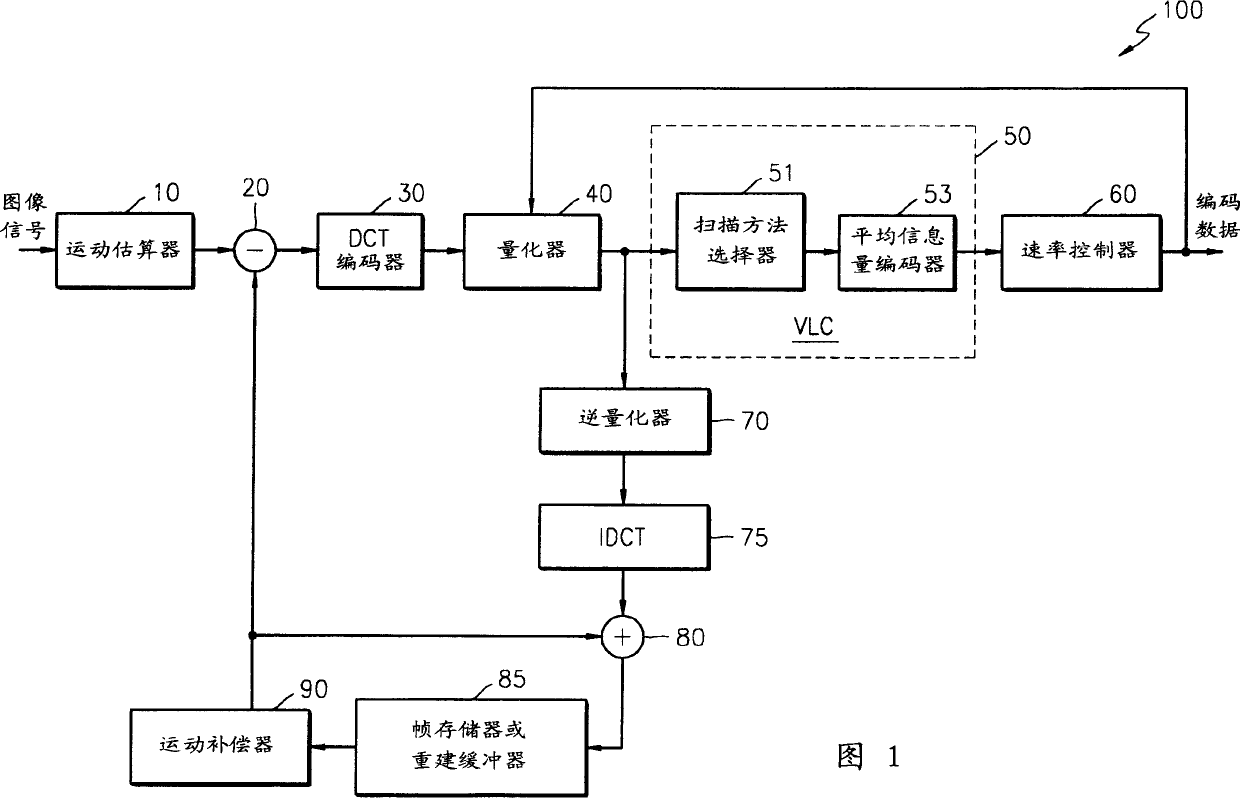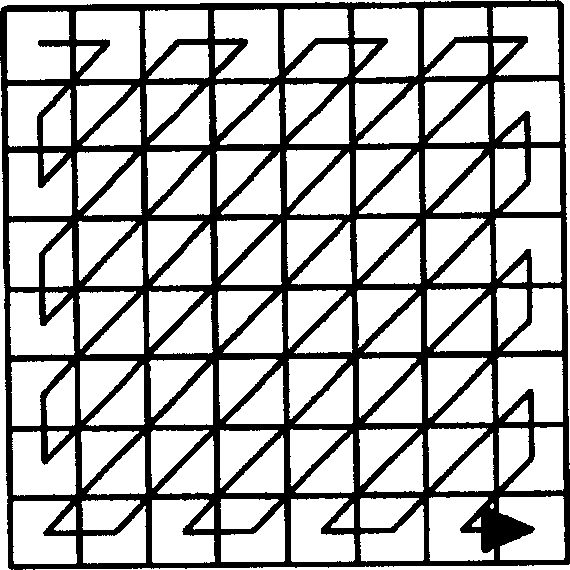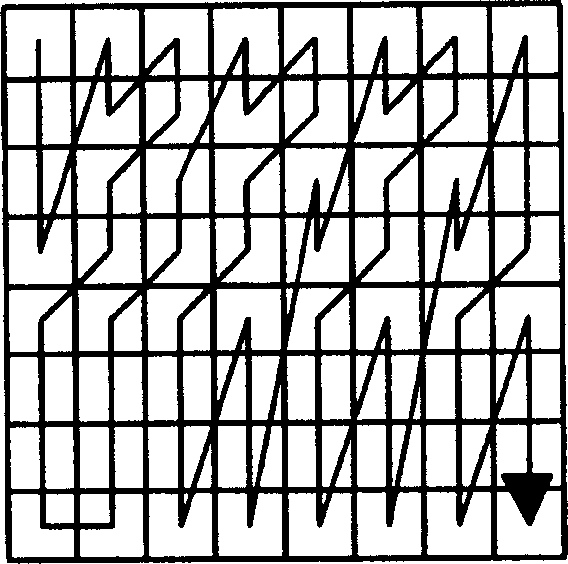Optimum scanning method for change coefficient in coding/decoding image and video
An encoding and double-scanning technology, which is applied in the field of encoding/decoding image signals, can solve the problems of reducing encoding efficiency, increasing the number of decoder bits, and data word length, etc.
- Summary
- Abstract
- Description
- Claims
- Application Information
AI Technical Summary
Problems solved by technology
Method used
Image
Examples
Embodiment Construction
[0036] Reference must be made to the drawings, which illustrate a preferred embodiment of the invention, and to what is written on the drawings, in order to gain a full understanding of the invention, the advantages of its operation, and the objects accomplished by its operation.
[0037] Hereinafter, the present invention will be described in detail by explaining preferred embodiments of the invention with reference to the accompanying drawings. The same reference numerals in the drawings denote the same components.
[0038] Figure 1 shows a block diagram of a general DCT coding system. Referring to Fig. 1, the DCT encoding system (or an encoder 100) includes a motion estimator 10, a subtractor 20, a DCT encoder 30, a quantizer 40, a variable length encoder 50, a rate controller 60 , an inverse quantizer 70 , an inverse DCT (IDCT) 75 , an adder 80 , a frame memory or reconstruction buffer 85 and a motion compensator 90 .
[0039] A variable length coder (hereinafter referre...
PUM
 Login to View More
Login to View More Abstract
Description
Claims
Application Information
 Login to View More
Login to View More - R&D
- Intellectual Property
- Life Sciences
- Materials
- Tech Scout
- Unparalleled Data Quality
- Higher Quality Content
- 60% Fewer Hallucinations
Browse by: Latest US Patents, China's latest patents, Technical Efficacy Thesaurus, Application Domain, Technology Topic, Popular Technical Reports.
© 2025 PatSnap. All rights reserved.Legal|Privacy policy|Modern Slavery Act Transparency Statement|Sitemap|About US| Contact US: help@patsnap.com



